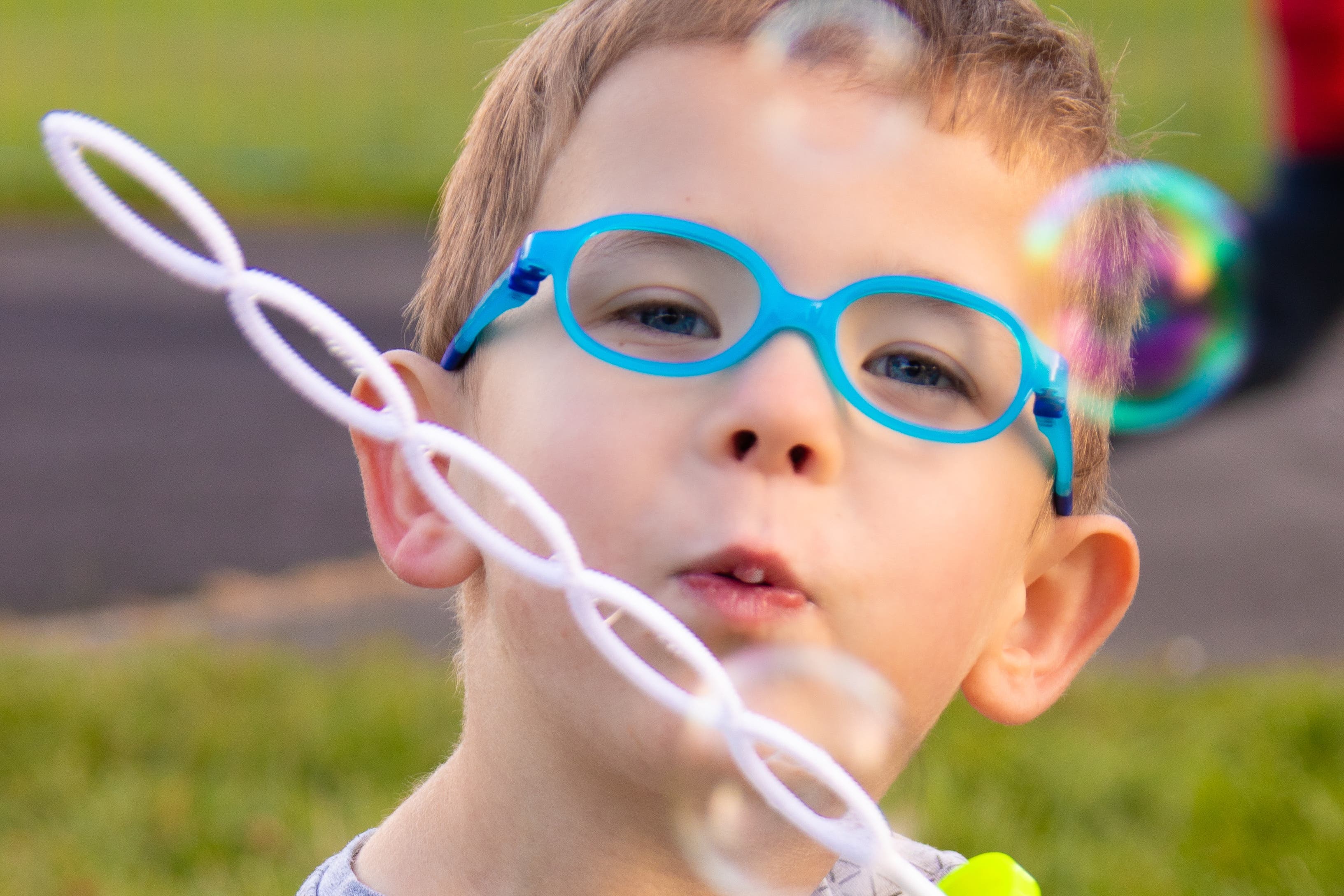
Parents are increasingly confused about how to care for their children's eyesight, even as rates of myopia in children continue to climb, according to new research.
Experts warn that the proportion of short-sighted children in the UK has doubled in the last half-century, with projections suggesting half the population could be myopic by 2050.
This alarming trend is highlighted by optometrist Professor Bruce Evans, visiting professor at City St George’s and London South Bank University.
Despite growing awareness of the increasing prevalence of myopia, a recent survey conducted by the parenting network Mumsnet reveals a significant gap in parental understanding of how to address the issue.

The survey suggests parents are often unsure about the best course of action for their children's vision. This uncertainty underscores the need for clearer information and guidance for parents navigating the challenges of childhood myopia.
Eye tests lower priority than dental check-ups
The research, which was commissioned by the UK optical community – the Association of British Dispensing Opticians (ABDO), the College of Optometrists and the Optical Suppliers’ Association (OSA) – found children’s visits to the optometrist are lower priority for their parents than dental visits – 89% of parents consider dental check-ups very important, while only 79% feel the same about eye tests.
In addition, one in 10 parents sees no reason to take their child to the optometrist unless an issue is flagged as concerning, and one in five parents does not know that school vision screenings aren’t the same as a full eye test.
“The Mumsnet survey indicates there’s some awareness among mothers that the proportion of children with myopia in the UK has doubled, but less awareness about what to do, for example more time outdoors, and regular eye examinations with an optometrist,” says Professor Evans.
And Rhiannon Evans, Mumsnet’s head of communications, comments: “Parents know eye health is important, but Mumsnet users tell us they’re often unsure about how and when to get their children’s eyes tested – sometimes assuming that schools automatically take care of it.
“It’s clear there’s a huge amount of confusion around children’s eye health, and while dental check-ups are a priority, eye tests often aren’t.
“Our survey highlights how families would benefit from clearer guidance around children’s eye health. Giving parents the right information is essential to helping them protect their children’s vision.”
Annual eye tests

The College of Optometrists recommends that children under 16 have their eyes tested annually, starting from around the age of three (routine eye checks are offered to newborn babies and young children to identify any problems early on), unless they have vision problems or are short-sighted, in which case they should be tested more frequently.
Children under 16, as well as those aged 16-18 in full-time education, get the cost of their eye test covered by the NHS. Children in these groups will also get a voucher towards the cost of a pair of glasses, which may cover the full cost or can be used towards more expensive options.
Professor Evans says short-sightedness, which usually starts after the age of five years, is the most common problem to significantly affect children’s vision.
“One key cause of confusion is many parents don’t realise that not all areas of the country have child vision screening,” he says, pointing out that screening typically only occurs once, at the age of four to five years.
“So, in most cases myopia will be missed by vision screening,” he explains, stressing that parents often don’t realise children don’t always report poor vision and so need to have regular eye examinations with an optometrist.
Struggling to see in class

The College of Optometrists says that apart from the social and educational problems caused by poor vision, there are less well-known longer-term aspects. Even low levels of myopia predispose a person to serious ocular conditions later in life, particularly in relation to detached retina, cataracts and glaucoma.
“Myopia means that the white board in class will be blurred so children will struggle to see what the teacher writes,” says Professor Evans. “This will disadvantage them and, of course, their concentration in class isn’t likely to be good if they can’t see what the teacher’s writing.
“Because myopia comes on gradually, children may not realise their vision is worsening.”
Refusing to wear glasses
In the open comments section of the survey, one respondent said: “I work in a secondary school as a teaching assistant and am always surprised by the amount of students that complain they can’t read the board, yet don’t have glasses and have never been tested.
“Also, there are students who do have glasses, but refuse to wear them in school.”
Indeed, Evans points out that wearing glasses being perceived as uncool can be a barrier to children’s vision being corrected. “Parents also worry about the impact that wearing glasses or eye patches might have on their child’s confidence or self-esteem.”
But Professor Evans says: “Thankfully, the days of standard NHS glasses are long gone. Nowadays, NHS funding for children’s glasses is via a voucher, so children can choose glasses they like and this helps to encourage wear. For children who don’t like glasses, contact lenses can be a good option.”
The survey found the majority of parents (85 per cent) believe limiting screen time is the best way to keep children’s vision healthy, followed by eating plenty of fruit and vegetables (69 per cent), and spending time outdoors (57 per cent).
And Professor Evans says research suggests there are several factors that can adversely affect children’s vision, including lack of time outdoors, early educational pressures, and use of smartphones, tablets, etc.
He says: “The Mumsnet survey revealed concerns about smartphones, but less awareness of the importance of time outdoors. This is probably more important than smartphones, and parents should aim for two hours plus outdoor time a day.
“Avoiding holding near vision too close is also important and probably applies as much to books as to smartphones and tablets.”
Experts reveal the truth about cholesterol – and how it impacts your health
How to look after children’s eye health
The science behind the UK’s first baby born from a womb transplant
What is coeliac disease? And what can and can’t you eat if you have it?
Expert tips on how to tame your frizzy hair - and what products to use







